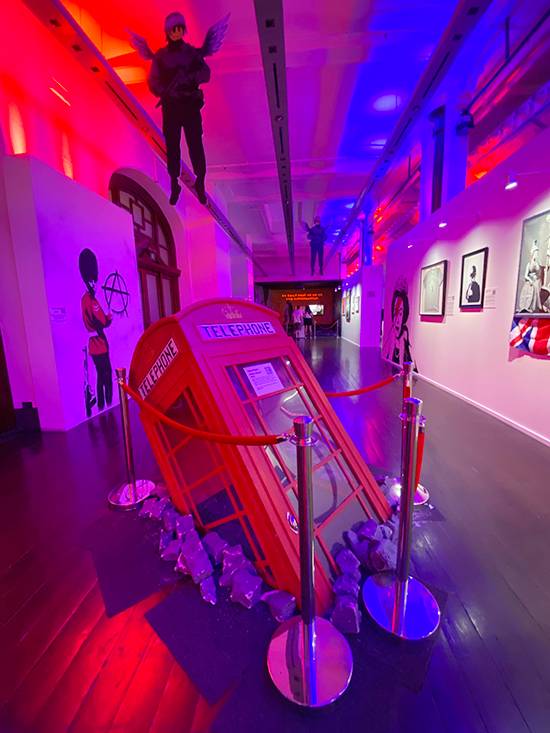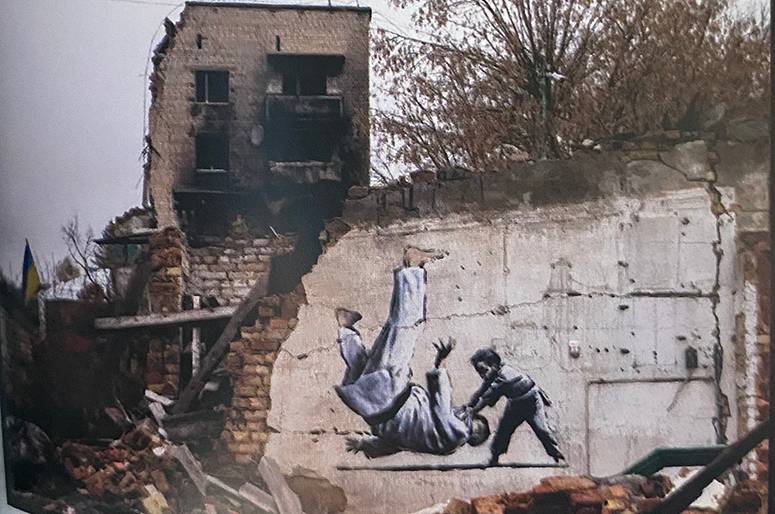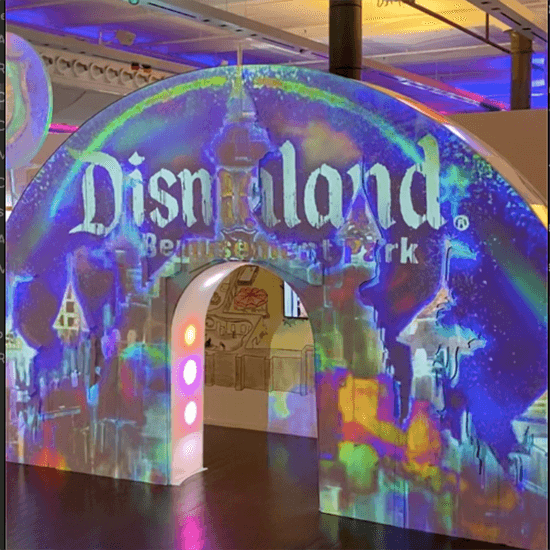Exit through the Banksy show
Is it possible to be hugely popular and subversive at the same time? Sounds like a paradox, because either condition seems to cancel out the other.
Over in Sydney recently, prior to the Manila exhibit, we saw the traveling show “The Art of Banksy: Without Limits,” which has been declared a “fake” exhibit by the artist, something he declares of all the exhibitions in his name, because he regards museums in general as “the trophy cabinets of a few millionaires.” But it has toured the world, and boasts “OVER 1.65 MILLION VISITED GLOBALLY” like some corporate fast-food brand. And it boasts an up-to-date chronology: its latest pieces come from war-ravaged Ukraine, where the artist dropped several murals in 2023.
With those Caveats in mind, “Without Limits” does stretch our notion of what art might still accomplish in the day-to-day world of strife, misery and instant gratification.

For Banksy, flying under the radar is an artistic move. If they can’t find you, how will they know what you’ll do next?
Wandering Pimpernel-like around the globe, laying traps, truth bombs and vivid images in public spaces, the style hits you first; but scratch the surface and there’s a consistent humanism wrapped in a critique of consumer society.
But hold on: isn’t that the artist himself, purportedly sitting on the Venice docks, hiding behind a newspaper, selling oil canvases of yachts to tourists? That’s the artist’s 2019 Instagram piss-take of the Venice Biennale that consistently failed to invite him. Who knows if it really was him?

Where Banksy is, throughout “Without Limits,” is in his display of wit: the splashes of phrases, stenciled ironies, visual puns. But wit can be famously icy. Banksy probes further, stenciling his heart on his sleeve—from ongoing projects reflecting the Palestinian situation (fractured walls in 2005; visiting the Gaza strip in 2015; converting an old Palestine hotel into the “Walled-Off Hotel” in 2017), through his purchase of an old marine vessel in 2020, the Louise Michel, which he repurposed as a rescue ship to pick up drifting refugees at sea who were being routinely ignored by Mediterranean coast guards. The most recent murals from Ukraine are classic Banksy reversal poses, such as a child flipping noted judo-fan Vladimir Putin on his back.
“They say graffiti is symbolic of the decline in society,” writes Banksy in his book Wall and Piece, “but graffiti is only dangerous in the mind of three types of people: politicians, advertising executives and graffiti writers.”
Two things here: Banksy refers to his kind as graffiti “writers” (not artists). Also, his “three types of people” suggests a symbiotic relationship: a dialogue between the power holders and the ones who glimpse the true cracks within the walls of power.

It turns out every piece in “Without Limits,” from the slightest jab to the grandest boat-buying gesture, spots that crack in the wall, and suggests ways to see through it. “Dismaland” was Banksy’s 2015 month-long installation at a derelict seaside resort in Somerset, inviting 50 artists to contribute to an immersive, splintered takedown of Disney and corporate theme parks in general. You walk through the archway — a snow-globe enchanted castle that’s quickly overtaken by quick-cut images of bombs, chattering skulls, police brutalism and dollar bills floating amid flames—and feel the queasiness of this “Bemusement Park,” where everything corporate rules our lives. It’s an easy target, but still, right on-target.
Whether it’s eerie juxtapositions—a smiling stencil of Mickey and Ronald McDonald hand in hand with the “Napalm Girl” of Trang Bàng, Vietnam; an axe-murdered red telephone booth in London; a crucified Christ holding shopping bags (“Consumer Jesus” from 2004)—or heartfelt stabs at engaging with the real world, Banksy is there, even in a curated, unauthorized narrative.
In a way, Banksy’s political graffiti is a fantasy: a world where people suddenly understand their true condition, rise up, take back their power. Could this ever really happen? Who knows? In art, anything is possible.
As you exit Banksy’s world, there is, indeed, a gift shop. The kind of branded items you’d expect, even if unlicensed by the artist. I would love to ask Banksy how he feels about being commodified like this. But he’s somehow learned to flip that equation on its head: to use his lucrative brand as a kind of subversive gesture that perpetuates itself. The trick is then to keep searing that brand back onto the surfaces of the world.
* * *
“The Art of Banksy: Without Limits” is ongoing at Sydney Town Hall, George Street.


